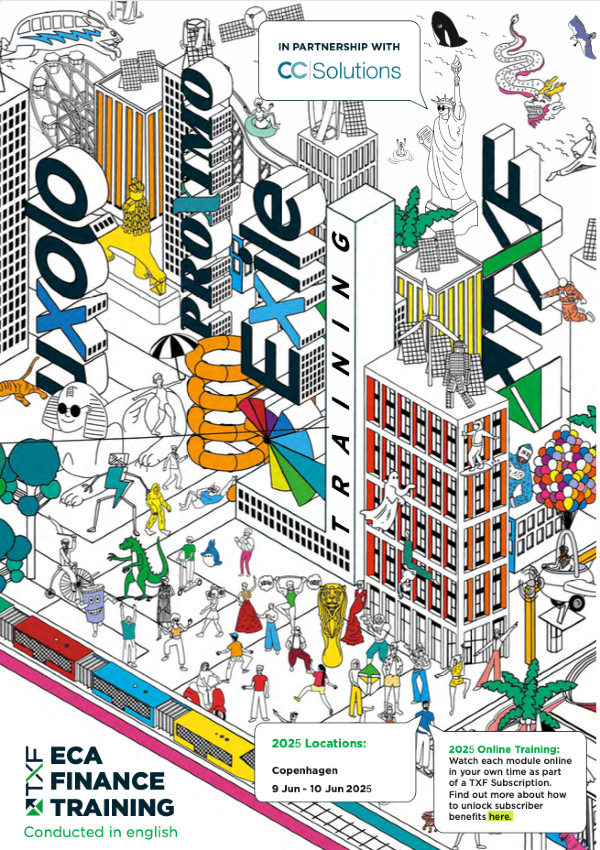Guest opinion: Post-Greensill - pondering the rise and fall of ponderables
Peter Lugli, a supply chain finance expert and a veteran of Ariba, Amazon Business and Prime Revenue, takes a closer look at the financial engineering employed by Greensill Capital, especially the term ‘prospective receivables’, a contentious new asset class better coined as ‘ponderables’.

Whoa, dude. In what we in Seattle call “breakfast”, neurologically potent stuff may have been shared between the parties in Bluestone et al. v. Greensill Capital et al. if the complaint filed in New York proves true.
It seems Greensill Capital (GC) was baking and financing an entirely new asset class, the next level of receivable which they call a ‘Prospective Receivable’. Unbaked readers will know what a receivable is. It is a claim for payment, typically by way of an invoice from one party for goods or services delivered to another, in satisfaction of a commercial bargain agreed between the same.
‘Prospective Receivables’ involve potential future claims for payment, for agreements which may be reached with potential future customers who may or may not be known today. Prospective Receivables may be linked to a firm like Bluestone Coal because Greensill’s AI and ML algorithms (or just Excel) found them. And they are eminently financeable. You know. Like real receivables.
Ponderables: A new asset class is born
We think a better word for this asset class is ‘Ponderables’. Because they represent a thought, a wish, a PowerPoint graphic. They hinge on invoices of the mind, from clients out there, somewhere. They are something to jaw about, in a hot tub near Bluestone Coal’s HQ in West Virginia, Jim Beam in hand in a plastic cup. (The lawsuit is silent on hot tubs, with or without GC principals, but again, this may be a scenario that explains).
Ponderables are most certainly not receivables but, boy, apparently the lawyers tried to color them as such. Bluestone Ponderables were couched in all the verbal trappings of steel-jawed receivables: Ponderables were wedged in the framework of the Receivables Purchase Agreement; the word ‘receivable’ was used in describing the Ponderable; Ponderables were assigned to an ‘Account Debtor’, even though there would be no debtor known, nor account yet defined. These in turn appear to have been wrapped by GC into something represented as Enterprise Finance, which, with apologies to Captain Kirk, is appropriate given the SCF from Outer Space presented.
Exception or rule?
In fairness to GC, we’re told by someone close to the firm that this form of ‘Prospective Receivables’ financing represented the exception to their more ‘vanilla’ SCF and AR financing deals. If true, it means it was outer space even for the purveyors of SCF from Outer Space. Let’s hope so. Because it is hard to see, given the uncertain nature of, well, future time and space, that any AI, ML algorithm, or Excel macro would be able to predict with financeable certainty steel futures, which in turn would impact steel demand, which in turn would define a need for Bluestone’s met coal which goes into making the steel. (This writer is no quant, but if that AI/ML/macro was so good, wouldn’t it be more efficient just to trade steel futures?) What can hopefully be said, though is that – absent any GC competitors in the space – the ponderable as an asset class is likely not to survive this legal action.
The bigger question post-Greensill is, does the sheer audacity of the structure compel a response from those who set the rules of the game? Or will lawmakers effectively leave it to grown-ups who should know better strike bargains they wish?
The real thing to ponder post-Greensill: what’s the fallout?
As the post-Greensill dominoes fall in the weeks to come, and as lawyers descend piranha-like on the pockets of Credit Suisse in pursuit of one of those “holding the bag”, the real question in this saga is simply: what changes?
We’re decidedly in the ‘too-soon to-know” camp. But here are a few connectable dots.
The story has legs. Unlike Carillion in the UK, or Abengoa in Spain, which were ‘SCF’ events with calls for regulatory action, those were mostly stories about one corporate and their affected supply chains that eventually went away. Here, we are witnessing a star-studded cast of players, with multiple storylines, and relentless financial media scrutiny. In the last 30 days, there have been 97 stories in the Financial Times mentioning “Greensill”. The Wall Street Journal has had 51. That’s about 5 stories per day from just two financial pubs. And we have yet to hear of ‘real’ stories like layoffs, government bailouts, or supply chain discontinuity (suppliers demanding payment upfront from GC-backed obligors who can’t find alternative SCF replacements post-Greensill).
Ratings agencies have decried the opacity of SCF transactions. They will push for more disclosure from rated firms. Moody’s wrote in September 2019 that “We see [Reverse Factoring] as a financing tool which can materially impact a customer’s liquidity if availability is ever curtailed”, and that disclosure by corporates “remains for the most part very poor and risks may not be understood”. (Of course, this didn’t prevent Moody’s from issuing an investment-grade A-bf rating to one of GC’s funds in 2017 and, ahem, contributing to the misunderstanding here, but that’s a diatribe for another day.)
In March 2021 S&P outright titled a report “Greensill case could trigger loss of confidence in supply chain finance market”. Pegging SCF volumes worldwide at $1.31 trillion in 2020, it states “because it is recorded in the corporate’s accounts as “trade payables” rather than financial debt, credit rating agencies have warned it could hide a company’s true financial leverage”.
Will the regulator, goaded by ratings agencies and auditors, step in? We’ve seen calls for SCF ‘regulation’ before, in the case of high-profile collapses or major ratings downgrades from firms like Spanish supermarket chain DIA, Abengoa, and the UK’s Carillion plc. Even the Big Four auditing firms took the extraordinary step of asking FASB in late 2019 for guidance on how to treat SCF arrangements – sheepishly, it seems, admitting “it would be difficult for the Board to provide prescriptive guidance… (i.e., trade payable or debt)”. Great – the industry is pleading for its version of Supreme Court Justice Potter Stewart’s 1964 obscenity threshold test: “I know it when I see it”.
The penultimate ponderable. Does the GC aspiration to finance ‘ponderables’ excite the regulator enough to get more prescriptive about these structures? Does it see GC as ‘SCF Run Amok’ that warrants getting the cops involved – or will they (as they appear to have done to date) point to actors correcting themselves through lawsuits, discovery, mitigation, and forbearance? The SEC, for example, has weighed in on this before, most recently in December 2019 at an AICPA event, but while it found “an increase” in SCF programs, according to Deloitte the official reportedly repeated the test of ‘materiality’ in assessing a corporate’s need to divulge in MD&A reports in filings.
COVID-19 fragility leading to more SCF transparency. The SEC issued Disclosure Guidance involving COVID 19’s impact on operations, liquidity, and capital resources. Though it is of no legal effect, it does help guide corporates in deciding what to disclose in their financial reports. One of the ranges of questions the SEC invites a corporation to consider includes:
“Are you relying on supplier finance programs, otherwise referred to as supply chain financing, structured trade payables, reverse factoring, or vendor financing, to manage your cash flow? Have these arrangements had a material impact on your balance sheet, statement of cash flows, or short- and long-term liquidity and if so, how? What are the material terms of the arrangements? Did you or any of your subsidiaries provide guarantees related to these programs? Do you face a material risk if a party to the arrangement terminates it? What amounts payable at the end of the period relate to these arrangements, and what portion of these amounts has an intermediary already settled for you?
Could this guidance be the seed of a new post-Greensill reporting obligation, regardless of materiality tests? Hmmm…
The layoffs and supply chains. It’ll be when a steelworker who’s just lost their job harkens upon their MPs office to ask how their government can permit this to happen, or a large strategic supplier says no to a corporate’s decision to keep payment terms at 270 days after losing funding for an SCF program that the scrutiny gets more ‘real’. Then disclosure obligations hinted at above as mere ‘guidance’ from regulators become more real, which in turn affects transparency and ratings, which in turn affects corporate liquidity and working capital. For the better.
The only thing this story is missing
We haven’t heard about Non-Fungible Tokens issued on the back of Ponderables.
Yet.





